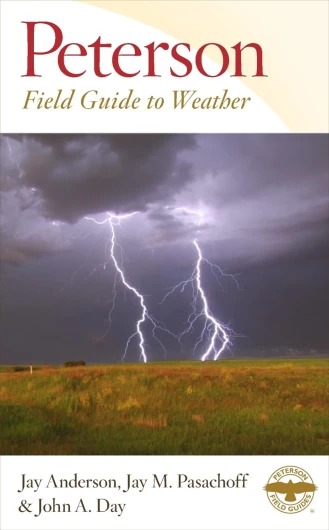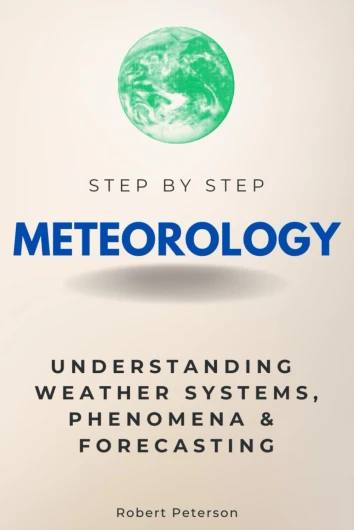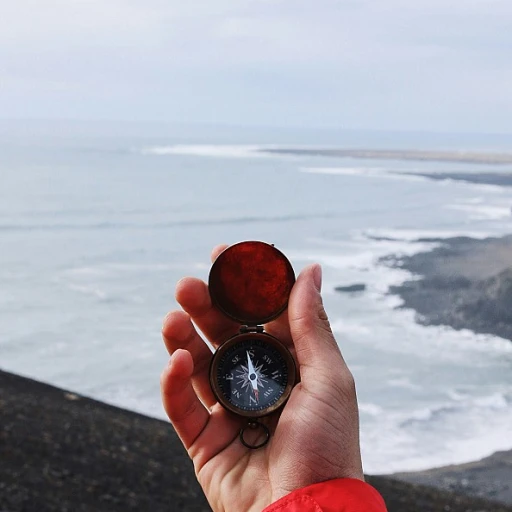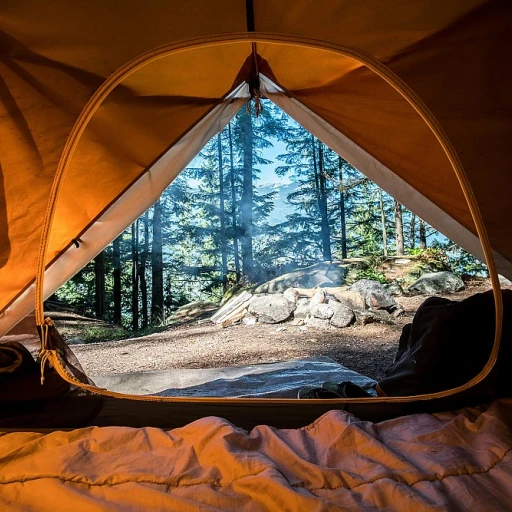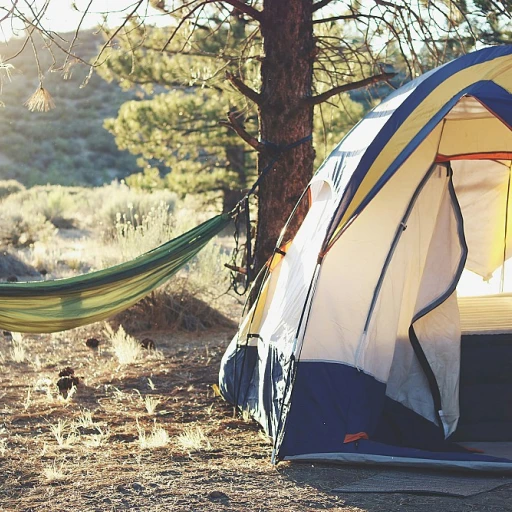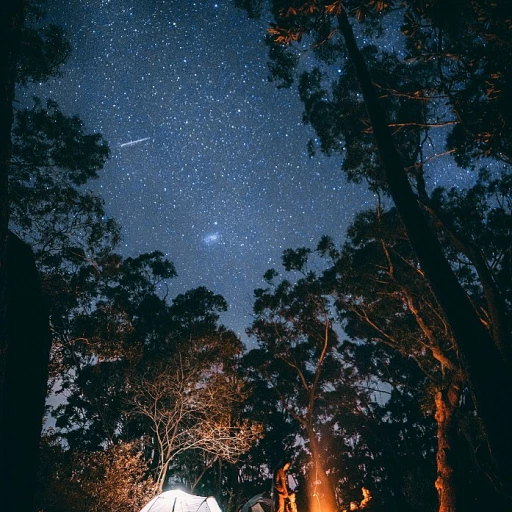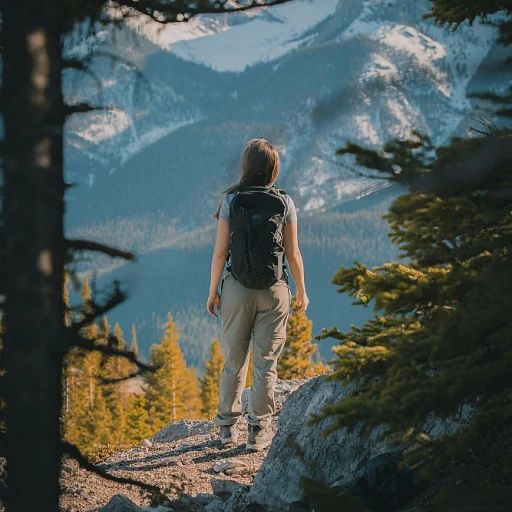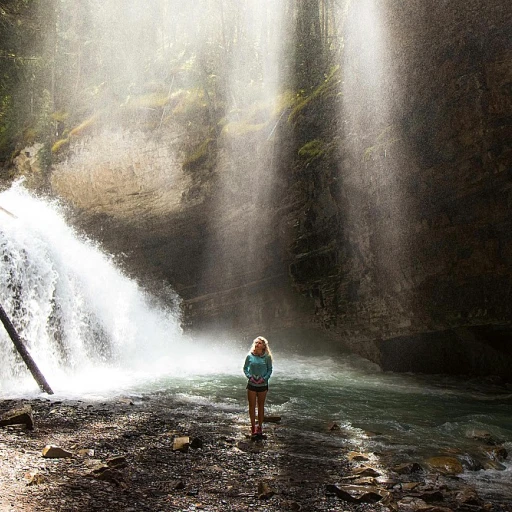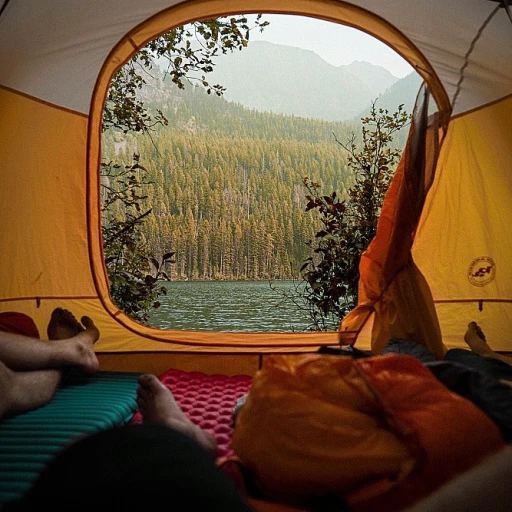
January and February: winter chill in Sedona
The chill of January and February
January and February in Sedona, Arizona, are synonymous with cooler temperatures and fewer daylight hours. An average high temperature around 55°F (13°C) and lows around 30°F (-1°C) are typical. Despite the chill, Sedona's stunning scenic beauty makes these months perfect for those who enjoy cooler, quieter hikes.
According to the National Weather Service, daylight averages near 10 hours per day in January, gradually increasing by February. Precipitation varies but averages around 1.5 inches per month, mostly falling as rain due to Sedona's lower elevation compared to nearby Flagstaff.
Interestingly, Oak Creek Canyon, a popular hiking spot, often experiences slight snowfall, adding a mystical winter touch. Meanwhile, hiking enthusiasts should be cautious of icy trails, especially in shadowed areas.
A special note for winter visitors—Sedona's weather can swing between calm and breezy, with wind speeds averaging around 9 mph. The shortwave solar energy averages about 3.5 kWh/m² per day, excellent for avid photographers to capture the winter landscapes.
It’s a serene time to visit Sedona without the rush of tourist crowds, giving a more intimate experience with nature.
March and April: spring awakening
What to expect in march and april
As the winter months melt away, Sedona begins to bloom with the first signs of spring. During March and April, you'll experience a refreshing awakening in the weather. Average highs during these months range from 66°F (19°C) in March to a pleasant 75°F (24°C) in April. The lows range between 37°F (3°C) in March and 44°F (7°C) in April. This transition creates an ideal climate for outdoor activities and exploration.
Rainfall stays relatively low, averaging around 1.5 inches for both March and April. This means there are plenty of sunny days for hikers and trekkers to enjoy. You can expect about 9-10 hours of daylight each day, giving you ample time to explore all that Sedona has to offer without feeling rushed. According to U.S. Climate Data, the average daily incident shortwave solar energy in March hovers around 6.1 kWh, increasing to 6.8 kWh in April, making it one of the best months for solar energy usage.
Experts like John Monroe, a seasoned hiker and local guide, often recommend visiting Oak Creek during these months. "Springtime in Oak Creek Canyon is spectacular," says Monroe. "The weather is mild, the flowers are starting to bloom, and the creek runs more freely with the melting snow."
Wind speeds during March and April range from 6 to 7 mph, with March occasionally bringing stronger gusts. Dew points stay manageable, averaging around 30°F (-1°C) to 35°F (2°C), contributing to the overall comfort of the season. According to the Weather Spark, you'll find that the growing season in Sedona usually starts around mid-April, bringing the landscape to life with vibrant colors and lush foliage.
If you are an adventurous soul or planning your next hike, these months are perfect for hitting the trails and embracing the serene yet invigorating spring weather. From Sedona's iconic red rock formations to the stunning floral displays in Oak Creek Canyon, March and April offer a peaceful and aesthetically pleasing climate for all nature enthusiasts.
May and June: pre-summer warmth
{Pre-summer warmth: May and June weather in Sedona
The months of May and June in Sedona, Arizona, experience the transition from spring to early summer, bringing warmer temperatures that invite outdoor adventurers. By May, the average high temperature reaches around 82°F (28°C), while June sees a significant rise to an average high of 92°F (33°C). Mornings and evenings remain relatively cool, with average lows dipping to 54°F (12°C) in May and 61°F (16°C) in June. pre-summer warmth events in Sedona begin this season, ideal for exploring top locations like Slide Rock State Park, Oak Creek Canyon, and hiking trails across the region.Solar energy at its peak
May and June are crucial for harnessing solar energy in Sedona. During these months, the daily incident shortwave solar energy averages around 6.5 kWh per m². Factors such as the extended hours of sunlight, with daylight lasting approximately 14 hours per day, contribute to the increase in solar radiation. This period is perfect for those looking to maximize solar panel efficiency and reduce energy consumption.Impact on local activities
The rise in temperatures affects various outdoor activities. Hiking, for instance, becomes more intense under the high sun, making early morning or late evening the best times to hit the trails. Rising temperatures contribute to a growing season that peaks during these months, with plants and wildlife thriving in the warm conditions. Water activities, like swimming in Oak Creek, also become increasingly popular.Weather patterns to consider
It’s important to note that Sedona receives scant rainfall during May and June, averaging just 0.4 inches (10 mm) of precipitation over an average of 3 rainy days per month. While the low humidity keeps conditions dry and prompts a need for adequate hydration, the occasional gusts of wind, averaging 8 mph (13 kph), offer a slight reprieve from the heat.Best times for capturing Sedona’s beauty
Photographers and nature enthusiasts find this time of year fantastic for capturing the iconic red rock formations bathed in clear, bright sunlight. As the summer heat begins ramping up, the contrast between the deep blue sky and the red rock landscapes offers stunning visuals, perfect for creating memorable shots.Interest in pre-summer activities
Both locals and visitors are drawn to Sedona in May and June for the milder start to summer. With popular spots like Grand Canyon and Slide Rock State Park just a short drive away, and events and activities in abundance, it’s a period that attracts those eager to enjoy what Sedona, Az, has to offer before the peak summer heat sets in. }July and August: peak summer heat
Sweltering days ahead - summer in Sedona
Summer in Sedona, Arizona, can be a real scorcher. Getting prepared for the high temperatures during July and August is crucial for any outdoor enthusiast. The average high temperature during these months often reaches up to 97°F (36°C), making it one of the hottest periods of the year. The sun can be relentless, thus planning outdoor activities early in the morning or late in the evening becomes essential for comfort and safety.
Dealing with high temps and low dew points
One of the critical aspects of Sedona's summer weather is the low humidity. The dew point during July and August hovers around 45°F (7°C), which indicates a very dry atmosphere. This dry heat can cause dehydration much faster than in humid climates. Experts like Dr. Thomas Minson from Arizona State University emphasize the importance of staying hydrated and taking frequent breaks to adjust to the heat.
Solar energy potential and energy saving
With the high amount of daily incident shortwave solar energy during the summer months, Sedona is a prime location for solar energy utilization. According to data from NASA, the average daily solar radiation in July is 7.5 kWh/m². This makes it an excellent time for activities that rely on solar energy. Many locals and business owners have started installing solar panels to take advantage of this abundant resource, showcasing a shift towards sustainable living.
Monsoon season - a surprising twist
While it is predominantly hot, July and August also mark the monsoon season in Sedona. The weather can be quite unpredictable with sudden thunderstorms. The National Weather Service reports that Arizona sees an average of 35-40% of its annual precipitation during these months. This rainfall can bring about short cooling periods, offering a refreshing break from the intense heat.
The influence on outdoor activities
Due to the extreme temperatures, hiking and trekking activities need to be tailored to the cooler parts of the day. Early mornings and late afternoons are ideal for exploring the majestic Red Rock trails or embarking on a journey through Oak Creek Canyon. Always carry ample water, wear light-colored clothing, and never underestimate the Arizona sun.
Final thoughts
Understanding Sedona's full range of summer weather, from blistering sun to surprise thunderstorms, enhances the experience and ensures safety. For a more detailed season-by-season weather breakdown, check out our weather guide to enjoy all that Sedona has to offer throughout the year.
September and October: autumn cool-down
Autumn cool-down in sedona
The months of September and October in Sedona, Arizona, bring a much-needed reprieve from the intense summer heat. As the autumn season sets in, the weather becomes more hospitable for outdoor enthusiasts, making this period one of the best times to explore the iconic Red Rock formations, Oak Creek, and various hiking trails.
According to the National Weather Service, the average high temperature in September starts at around 88°F (31°C) and gradually drops to about 78°F (26°C) by the end of October. The nights start to feel cooler, with average low temperatures ranging from 60°F (15°C) in September to 50°F (10°C) by late October.
Precipitation and wind patterns
This period typically sees an increase in precipitation compared to the drier summer months. September, in particular, can experience occasional monsoon storms, characterized by heavy rain and gusty winds. The average monthly precipitation for September is about 1.8 inches, while October receives around 1.6 inches. Wind speeds in autumn average 6-8 mph (10-13 km/h), with gusts that can reach up to 20 mph (32 km/h) during storms.
Solar energy and daylight hours
The daily incident shortwave solar energy starts to decrease as the days grow shorter, averaging 5.7 kWh/m² in September and dropping to 4.7 kWh/m² in October. This reduction in solar energy means fewer daylight hours, but there's still plenty of sun for outdoor activities. In September, expect around 12.4 hours of daylight, decreasing to about 11 hours by the end of October.
Dew point and humidity
The dew points in September and October fluctuate between 40-50°F (4-10°C), contributing to a comfortable humidity level that's typically below 50%. This dry and crisp air is ideal for hiking and other strenuous activities, as it reduces the risk of overheating.
Noteworthy experiences
Autumn is a fantastic time to visit places like Slide Rock State Park and Oak Creek Canyon, where the fall colors create a stunning backdrop. Hiking trails such as Devil's Bridge and Cathedral Rock offer scenic vistas with lower temperatures, making the trek more enjoyable. This is also the time when events like the Sedona Arts Festival and the Red Rock Fantasy light up the local calendar, blending cultural experiences with natural beauty.
As Sedona transitions into cooler months, the vibrant fall foliage and temperate climate make it an appealing destination for those looking to enjoy outdoor activities without the scorching summer heat or the winter chill. The autumn season in Sedona perfectly balances milder weather with breath-taking scenery, providing an unforgettable experience for visitors.
November and December: winter returns
Embracing the holiday season
sedona in November and December shows a quieter side, with average temperatures dipping to a low of 34.7°F in December and highs that linger around 61.8°F. The weather generally feels crisp, perfect for a serene escape amidst the red rocks. One of the highlights of this period is the weather in sedona. The climate facilitates various activities without the intense summer heat or excessive holiday traffic.
Seasonal changes and activities
Native celebrations, the Christmas lights at Tlaquepaque, and holiday fairs make these months particularly charming. Despite an average of 1-2 inches of precipitation spread across an average of 4-5 days, outdoor enthusiasts are still drawn to the scenic hiking trails, which transform under a cool, misty haze. Oak Creek Canyon becomes a favorite for those looking to escape into nature without braving extreme weather conditions.
Experts on sedona's winter weather
Weather expert Prof. James White from the University of Arizona states, "November and December offer a break from Arizona's usual sun-drenched climate, providing visitors with a taste of winter that's gentle yet invigorating." Studies show a significant uptick in visitors who appreciate the more temperate climate, allowing for a diverse range of activities from hiking to sightseeing.
Key weather statistics for the end of the year
- High temperatures: 61.8°F
- Low temperatures: 34.7°F
- Average precipitation: 1-2 inches
- Average wind speed: 8-10 mph
- Average daylight: 10 hrs
The shortwave solar energy reaching the ground is markedly less during these months, averaging between 200-300 kWh per month. This reduction affects the overall growing season, though it remains a critical time for prepping gardens and landscapes for the spring.
Personal experience of a hiker
Jessica Lopez, who hiked in Sedona during December last year, shares, "Walking through the trails amidst the fresh morning dew and watching the sun slowly warm the red rocks was a magical experience. It's different from the summer hustle, almost meditative."
Annual weather trends and patterns
Annual weather trends and patterns
Understanding the weather trends and patterns in Sedona, Arizona, throughout the year can significantly enhance your outdoor adventures in this captivating region. Situated in the state of Arizona, Sedona experiences distinct seasonal changes that can impact your hiking, biking, and exploring activities.
The climate in Sedona showcases notable variations between months, with the average high temperatures ranging from 55°F (13°C) in January to a scorching 97°F (36°C) in July. Conversely, the low temperatures can drop to 31°F (-1°C) in January and February, providing a chilly contrast to the hotter months.
February marks a turning point as the desert begins to warm, with average highs reaching 61°F (16°C) and lows around 34°F (1°C). March and April introduce springtime energy, with daily highs climbing to 69°F (21°C) and 78°F (26°C), respectively. During this period, the days get longer, and the blooming wildflowers create a picturesque landscape in places like Oak Creek and Slide Rock State Park.
May and June usher in the pre-summer warmth, with average temperatures in May reaching 86°F (30°C) and in June peaking at 95°F (35°C). June is also one of the sunniest months, averaging over 13 hours of daylight per day. As the sun's rays intensify, Sedona becomes a renowned destination for harnessing solar energy, marked by higher daily incident shortwave levels.
July and August signal the peak summer heat, with average high temps of 97°F (36°C) and slightly lower nighttime temperatures of 64°F (18°C). This period is notable for its monsoon season, which brings short but intense bursts of precipitation, averaging up to 2.5 inches (63 mm) of rain in some years. Despite the sizzling heat during the daytime, evenings can be comfortably cool.
As the calendar flips to September and October, autumn cool-down sets in with average highs decreasing to 90°F (32°C) in September and a more moderate 79°F (26°C) by October. This transition period marks an ideal time for hiking and exploring Sedona's renowned red rocks and Oak Creek Canyon. The dew point, wind speed, and overall climate make this season extremely favorable for outdoor activities.
November and December usher the return of winter weather, with average daily highs of 66°F (19°C) in November that drop to 55°F (13°C) by December. Nights get significantly colder, making layers essential for those venturing out in the early mornings or during overnight stays. Precipitation remains low but perceptible, especially in December when the average rainfall reaches up to 1.5 inches (38 mm).
Overall, Sedona's weather is diverse and dynamic, influenced by both altitude variations and desert climate characteristics. Each season offers unique opportunities and challenges, whether it’s dealing with the peak summer heat or embracing the winter chill. This seasonal diversity helps define the annual weather trends and patterns in one of Arizona's most picturesque destinations.
For those interested in the impact of Sedona's weather on hiking in surrounding areas, such as the Grand Canyon, you can find more details here.
Weather impact on outdoor activities
Weather influence on hiking trails
Hiking in Sedona is a thrilling experience, whether you're exploring the well-trodden paths of Oak Creek or venturing into the wild terrains of Red Rock. But understanding how Sedona's weather behaves month to month is crucial for a safe and enjoyable adventure.
During the winter months, particularly in January and February, temperatures in Sedona can drop to an average low of 30-35°F. While these frosty mornings create stunning, crisp landscapes, hikers should be prepared with proper gear to navigate icy paths, especially in shaded areas of trails.
Spring, spanning March and April, brings moderate temperatures ranging from 45°F to 70°F. This pleasant weather is ideal for longer hikes like the Cathedral Rock, where blooming foliage adds a vibrant touch to the surroundings. However, expect the trails to be busier during weekends and spring break.
As May and June usher in pre-summer warmth, average high temperatures can reach 81°F. Hikers should start their treks early in the day to avoid the midday heat, ensuring they stay hydrated. Trails like Bell Rock and Devil's Bridge become particularly popular during this time.
July and August are the hottest months, with average highs peaking at around 95°F. It's vital to be mindful of the potential for heat exhaustion. Experts recommend shorter, shady routes and carrying plenty of water. Despite the heat, monsoon season kicks in around mid-July, bringing sudden, intense rain. These storms can turn trails slippery and dangerous rapidly.
Autumn, from September to October, provides a respite from the intense summer heat, with temperatures averaging between 60°F and 81°F. This season is perfect for exploring the Grand Canyon, as the cooler climate and fewer crowds make for an enjoyable experience.
The cooler months of November and December see temperatures drop back down to between 30°F and 60°F. These months are quieter, offering a more serene hiking experience in spots like Slide Rock State Park.
Tracking weather patterns for safety
Knowing the forecast is essential for making informed decisions about when to hike or trek. In Sedona, the weather can vary greatly depending on the time of day and the month's seasonal norms. For real-time weather updates, consider reliable sources like NASA or local stations near the Sedona Airport and Flagstaff Pulliam Airport.
Heavy precipitation, which generally occurs during the monsoon season in July and August, can drastically change trail conditions. According to a study from the National Weather Service, Sedona can experience up to 2 inches of rainfall in one day during these months, which is why checking forecasts and planning your hikes around these weather events is a prudent call.
Sedona’s weather trends and hiking activities
In summary, the average temperature in Sedona varies significantly across different months. From a frosty 30°F in January to a sizzling 95°F in July and August, each season offers unique opportunities and challenges for hikers. Awareness of these trends enables you to plan your hiking trips accordingly, ensuring a safe and enjoyable journey through Sedona's remarkable landscapes.
Whether you're planning a trek from Flagstaff to the Grand Canyon or a leisurely walk along Oak Creek Canyon, understanding Sedona's climate will enhance your experience. So, gear up, keep an eye on weather changes, and enjoy the trails!



